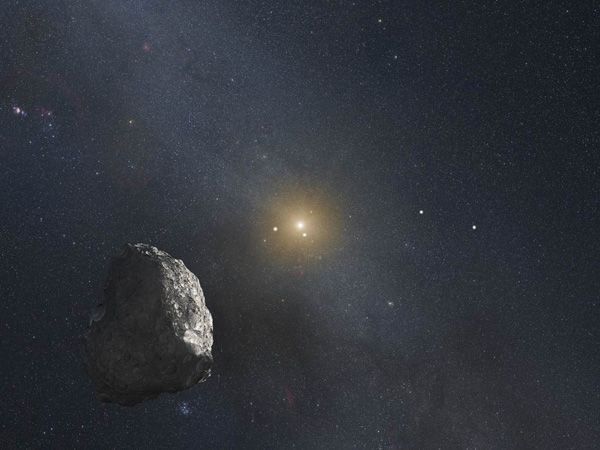
NASA / Johns Hopkins University Applied Physics Laboratory / Southwest Research Institute
On Track: New Horizons Carries Out Third KBO Targeting Maneuver (Press Release)
NASA’s New Horizons spacecraft has successfully completed the third in a series of four maneuvers propelling it toward an encounter with the ancient Kuiper Belt object 2014 MU69, a billion miles farther from the sun than Pluto.
The targeting maneuver, performed with the spacecraft’s hydrazine-fueled thrusters, started at approximately 1:15 p.m. EDT on Wednesday, Oct. 28, and lasted about 30 minutes – surpassing the Oct. 25 propulsive maneuver as the largest ever conducted by New Horizons. Spacecraft operators at the Johns Hopkins University Applied Physics Laboratory in Laurel, Maryland, began receiving data through NASA’s Deep Space Network at approximately 8:15 p.m. EDT on Wednesday that indicated a successful maneuver.
The four maneuvers are designed to alter New Horizons’ path to send it toward a close encounter with MU69 on Jan. 1, 2019. The flyby would be part of an extended mission that NASA still must approve; the New Horizons team will submit a formal proposal to NASA for that mission in early 2016. The science team hopes to bring the spacecraft even closer to MU69 than it came to Pluto on July 14, which was approximately 7,750 miles (12,500 kilometers).
Capping the series, the fourth and final KBO targeting maneuver is scheduled for Nov. 4. As the New Horizons team learns more about the orbit and location of MU69 – the KBO was only discovered in summer 2014 – it will plan additional maneuvers to refine the path toward the prospective flyby in 2016 and beyond.
At the time of yesterday’s maneuver, New Horizons, speeding toward deeper space at more than 32,000 miles per hour, was approximately 79 million miles (127 million kilometers) beyond Pluto and 3.17 billion miles (5.1 billion kilometers) from Earth. The spacecraft is currently 900 million miles (1.45 billion kilometers) from 2014 MU69. All systems remain healthy and the spacecraft continues to transmit data stored on its digital recorders from its flight through the Pluto system in July.
New Horizons is part of NASA’s New Frontiers Program, managed by the agency’s Marshall Space Flight Center in Huntsville, Alabama. APL designed, built, and operates the New Horizons spacecraft and manages the mission for NASA’s Science Mission Directorate. The Southwest Research Institute leads the science mission, payload operations, and encounter science planning.
Source: New Horizons Website
****

NASA, ESA, and G. Bacon (STScI)

No comments:
Post a Comment